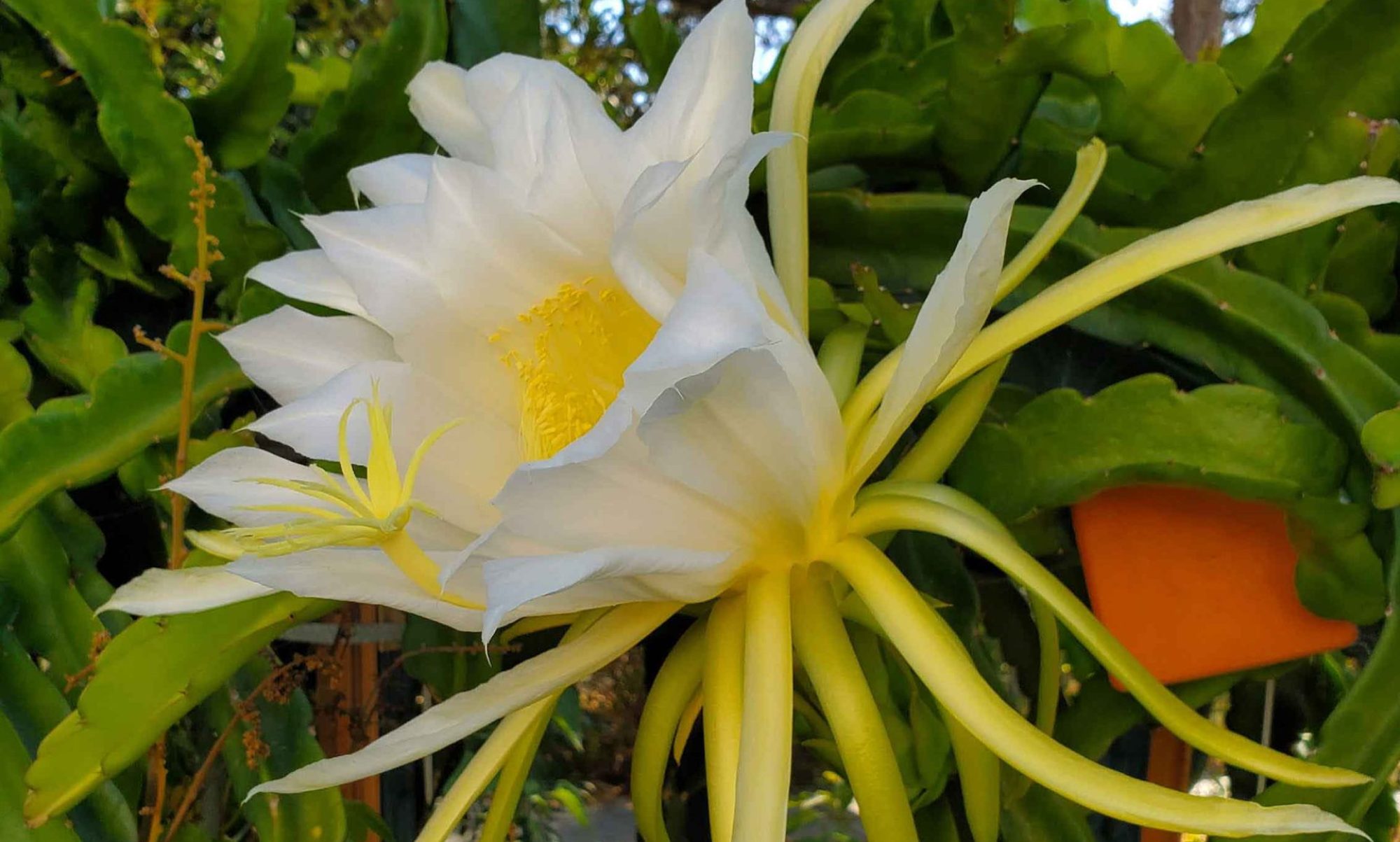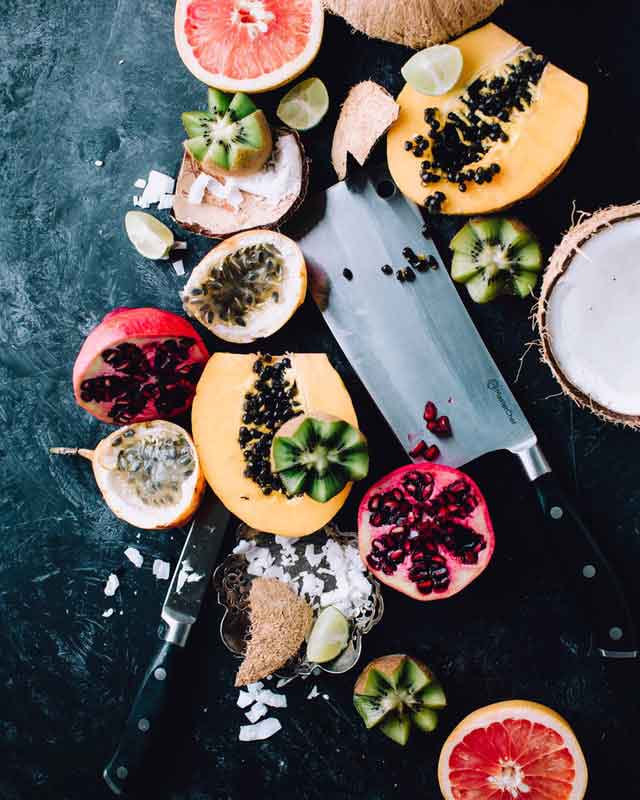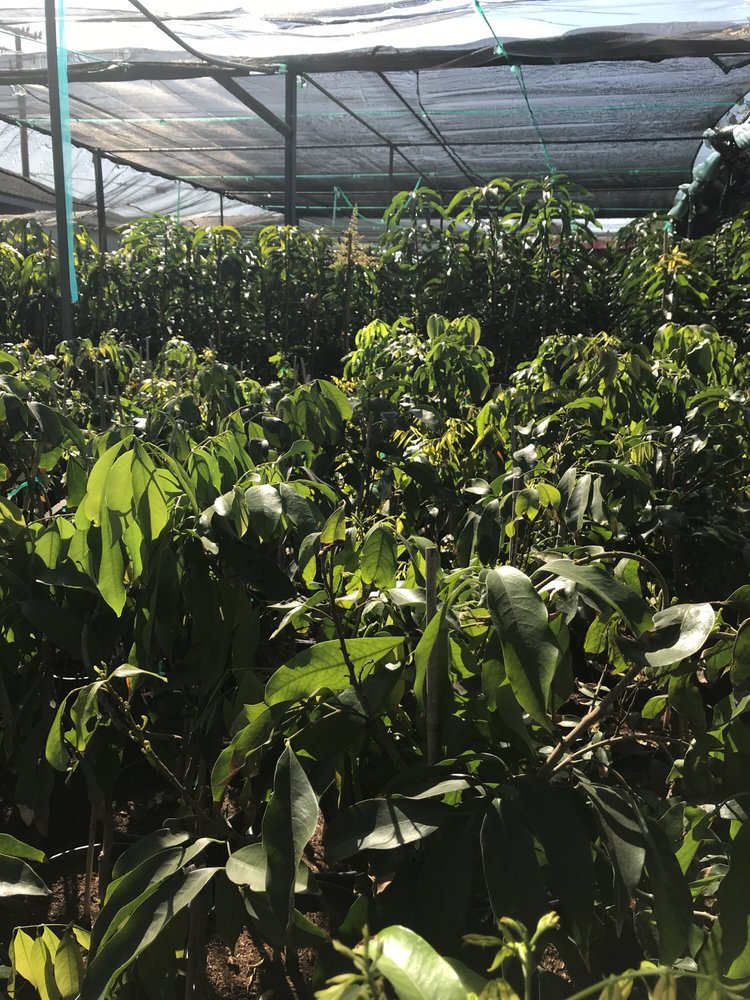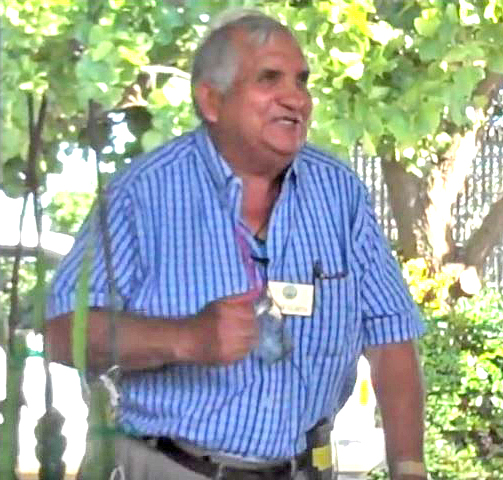Master Gardener Aaron Ostrom has kindly invited us to visit his rather large urban, hillside garden of ornamentals and edibles, including Almond, Aprium, Apple, Atemoya, Avocado, Banana, Barbados Cherry, Blackberry, Cape Gooseberry, Capulin Cherry, Carob, Chaya, Che, Cherimoya, Chocolate Pudding Fruit, Citrus of every sort, Coffee, Elderberry, Fig, Goji, Guamuchil, Guava, Ice Cream Bean, Jaboticaba, Java Plum, Jujube, Lemonade Berry, Lingaro, Longan, Loquat, Lychee, Macadamia, Mango, Natal Plum, Nectaplum, Papaya, Passion Fruit, Peach, Peanut Butter Fruit, Pear, Pepino Dulce, Persimmon, Phalsa Berry, Pindo Palm, Pineapple, Pomegranate, Raisin Tree, Raspberry, Sichuan Pepper, Sugar Cane, Surinam Cherry, Walnut, Wampee, White Sapote, etc. What a Rare Fruit wonderland! Aaron has lived all over the world and his plantings truly reflect that.
He does note that the garden is not accessible for those who have difficulty climbing stairs and slopes but our Program Chair Deborah Hartnett will be Zooming the trip to those of us stuck at home.
Aaron’s address and Zoom links will arrive in your newsletter ASAP.
Photo by Food Photographer | Jennifer Pallian on Unsplash




